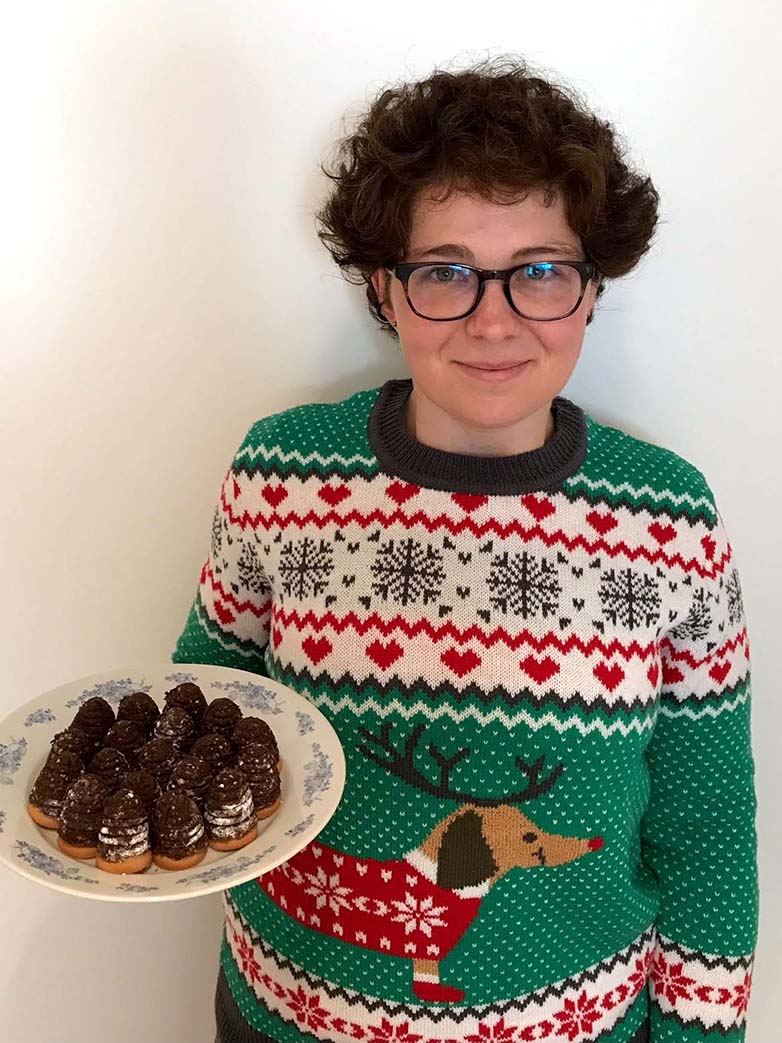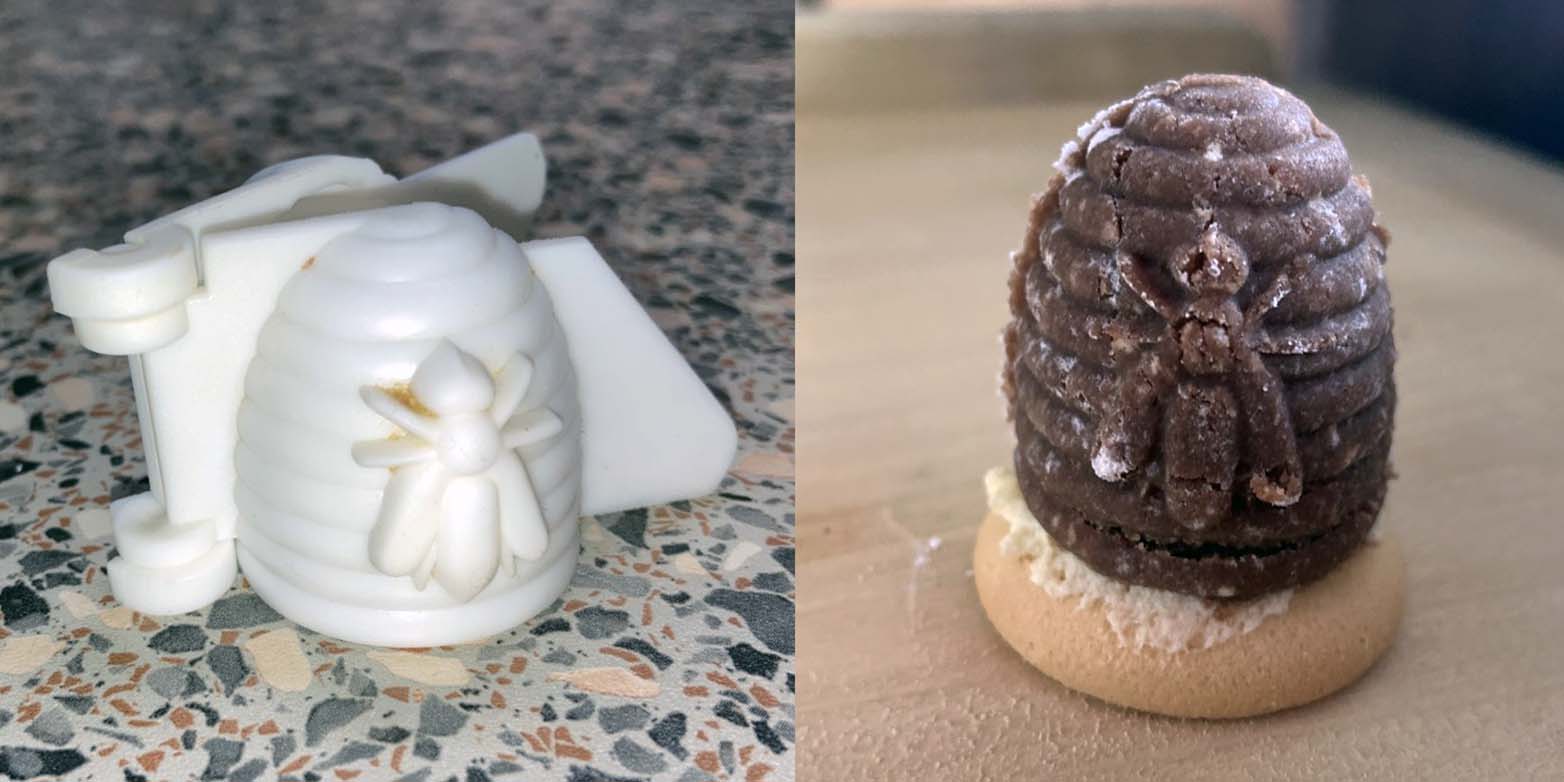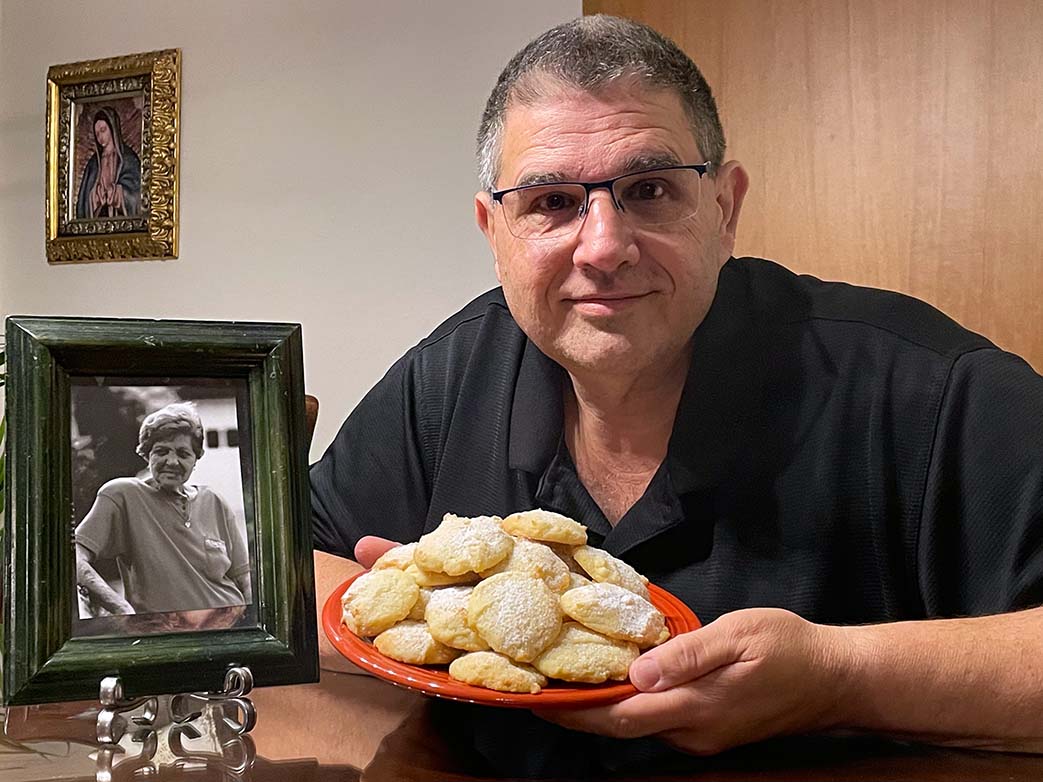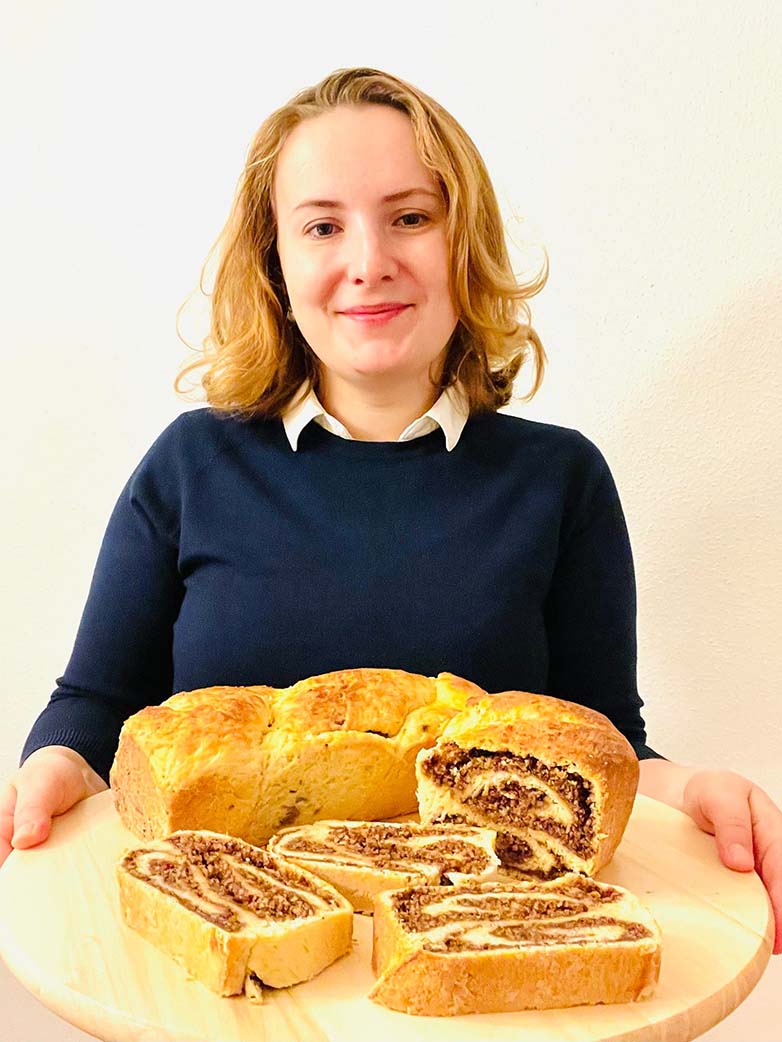Baking tips from the ETH community
We received a whole host of deliciousness in response to our appeal for your favourite baking recipes from countries across the globe. Below you will find the recipes submitted by Kristýna Kantnerová, Nicholas Cardo and Silvana Albert, along with more about the traditions and some anecdotes surrounding their delicious baked goods.
Beehives
By Kristýna Kantnerová, Postdoctoral Researcher, D-USYS

My Christmas cookie comes from the Czech Republic. There are two schools of thought about its name. Both sides are engaged in constant conflict. Both believe that theirs is the only true name and they dislike the other. Depending on which group you belong to, the cookies are called either “beehives” or “wasp nests”. I think there is a simple solution to this dispute – to give the cookie the name of the mould you make it in. Because my family only has one mould that is round at the top and leaves a cute bee imprint on the cookie, I am in the beehive camp (as opposed to my partner, who belongs to the wasp nest camp, which uses a simple, boring cone-shaped mould… 😉).
Recipe
Dough
250 g bought round sponge biscuits
210 g sugar
130 g softened butter
30 g cocoa
2 tablespoons rum
1 tablespoon milk
1 egg white
Crush the sponge biscuits and mix everything together into a dough. It should be a bit sticky and solid. If you have plenty of time, you can bake the sponge biscuits yourself instead of using bought ones.
Filling
150 g softened butter
100 g powdered sugar
1 package vanilla sugar
1 egg yolk
2 tablespoons rum
Mix all ingredients together using a blender.
Extra ingredients
powdered sugar for dusting the mould
sponge biscuits

Take a mould (I hope you know now which one is the right one to use…), dust its inner surface with powdered sugar to stop the dough sticking. Press a bit of the dough in the mould using your index finger and make a hole in the middle. Fill the hole with a bit of the filling and seal the bottom with one sponge biscuit. Instead of a sponge biscuit, you could also use Scottish shortbread, Linzer cookies or French sablés. Turn the mould upside down so that the biscuit is on the bottom and carefully open it to reveal the beehive. Enjoy in moderation!
If you don’t have a mould, shape a small half-sphere with your hands, and then follow the instructions given above. Make a hole in the bottom using your index finger and add the filling. Cover the hole with a sponge biscuit, any other biscuit, or even a bit of dough. Be creative!
Nanny’s Ricotta Cookies
By Nicholas Cardo, Chief Operations Officer, CSCS

This is a very simple cookie recipe from my childhood. The recipe comes from my grandmother, whom we affectionately called Nanny. These cookies fill the air with an aroma that takes me back to my childhood days when I used to watch my grandmother bake hundreds of them. They are light and delicious and simply meant to be enjoyed. Each year at Christmas, I continue the tradition of baking these cookies under the watchful eye of her photo.
My grandmother, Evelyn, was born in Avellino, Italy, and came to the United States when she was very young. While the actual origin of the recipe is unknown, it is believed that this was a recipe she learned from her mother that originated from their life in Avellino.
This recipe is easy enough to follow and great to use as a family baking activity with children. Not to mention the rewards of eating the cookies afterwards!
Recipe
225 g white flour
200 g white sugar
55 g ricotta cheese
125 g butter
1 egg
1 teaspoon vanilla
1/2 teaspoon baking soda
1/2 teaspoon salt
powdered sugar for dusting
Combine the flour, salt, and baking soda in a bowl. In a separate bowl, blend the ricotta cheese and butter together. Add the vanilla and mix well. Slowly fold in the sugar. Beat in the egg and slowly add the flour, baking soda and salt. Blend thoroughly to form a dough. The dough will be moist and a little sticky. Using a small spoon, drop approximately 15 g of dough onto a greased baking tray or baking mat. There is no need to form the cookies as they will take shape while baking. Bake at 180°C for 9 to 10 minutes. After the cookies have cooled, dust them with the powdered sugar. Sit back, relax and enjoy!
Cozonac
By Silvana Albert, Research Software Engineer, D-HEST

Cozonac (plural cozonaci) is our most traditional Christmas cake and is enjoyed in literally every Romanian household at Christmas and Easter. My grandmother taught my mother how to make it, my mother taught me and I will teach my daughter (she is only three years’ old). This will ensure that this tradition will carry on as it has done for hundreds of years. Despite having been in Switzerland for two years, I still always make it at Easter and Christmas.
I like to think of it as an improved version of panettone because it has a thick walnut cocoa and sugar filling. It is not an easy task to get it into the perfect shape and consistency, but it is fun to try. It tastes great even when it doesn’t look perfect! My mother’s secret is to rub honey over it when it is still hot after taking it out of the oven. It is best enjoyed with a glass of milk. No matter how full you are after a seven-course Christmas meal, you will always find room for some cozonac!
Recipe
Take all the ingredients out of the fridge at least one hour beforehand. They should be left at room temperature. The oven door should not be opened within 20 minutes of putting the loaf tin into the oven.
Ingredients for one plaited sweet bread
For a loaf tin with the dimensions: L=28 cm, W=8–13 cm (trapezoid), H=8 cm
Dough
500 g high quality flour
100 ml lukewarm milk
2 tablespoons full-fat yoghurt
1 tablespoon full-fat cream
100 g sugar
100 g butter
10 g dried yeast
1 egg
grated zest of a lemon or orange
pinch of salt
Filling
250 g ground walnuts
100 g powdered sugar
1 teaspoon cocoa
1 teaspoon rum essence
Extra for greasing
100 g melted butter
Preheat the oven to 180°C. Spoon 3 tablespoons of lukewarm milk over the yeast and mix well. Leave for 5–10 minutes. Sieve the flour into a fairly large bowl. Add the yeast and milk mixture, and all the other ingredients (except the butter) in the middle. Knead everything together, adding more warm milk or flour if necessary, until the desired consistency is obtained. Gradually add the melted butter at medium temperature, kneading continuously. Cover with thick towels and leave to rest at room temperature for 15 minutes until it has doubled in volume.
In a separate bowl, mix the ground walnuts with the powdered sugar, cocoa and rum essence. Divide the dough into 2 equal parts and roll out each section into a 1 cm thick rectangle. Drizzle the melted butter over the top, followed by the walnut mixture, and carefully spread it over both sections. Twist the two pieces together and place in the loaf tin that has been greased with butter and lined with flour. Leave the plaited bread to rise in a warm place in the loaf tin for another 10–15 minutes until it has increased in volume. Brush with melted butter and a beaten egg.
Bake the loaf for about 20 minutes or until golden. Reduce the heat to 90°C and bake for another 15 minutes. Turn it out of the loaf tin, brush with honey and leave to cool on a wire rack. Try to resist the temptation of slicing the cozonac while warm! I know it’s hard because it smells so good. Wait for a couple hours until it is cool.
